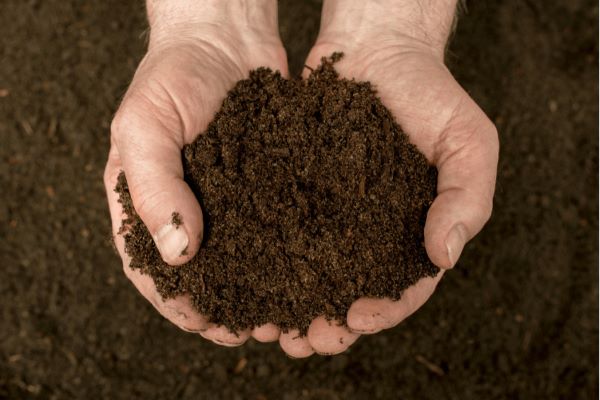- Soil Association
- Take action
- Grow at home
- Allotments and home-growing
- Make your own compost

Make your own compost
How to make your own compost
Well-made compost can do wonders for your soil. It will boost biological activity, reduce disease and result in stronger, healthier plants.
Here's our easy guide with tips on how you can make your own compost at home.
- Setting up your compost heap
- Compost ingredients
- Compost recipe
- How to get the best compost
- Compost troubleshooting guide

Setting up your compost heap
You can make well-rotted compost in a simple covered heap.
In small gardens or allotments, it might be easier to have a contained compost heap. You can buy a compost bin, or you can easily make one from old pallets or other reclaimed wood. To make a pallet compost bin, take three wooden pallets and stake and tie them together to form a bay. If you have the space, you could place two or three compost areas side by side. This means you can turn and transfer the materials from one to the other.
Compost ingredients
Almost anything organic can go on your compost heap. You need an even mixture of green and brown material to make a good compost.
- Green materials are nitrogen-rich. These include food waste, weeds, grass cuttings, coffee grounds, leafy parts of plants.
To avoid attracting vermin, avoid any grains (bread, couscous and so on), meat and cooked food.
For weeds, young annuals are fine to add as long as they have not gone to seed. Avoid perennial weeds, as they can survive and multiply when back in the soil.
- Brown materials provide carbon. These include woody stems, twigs, straw, paper, cardboard. Cut up, shred or chip any woody material before composting.
Compost recipe
Time: from 4 months to a year +
- Mix green waste with brown material in equal parts. Shredded material works best.
- Let it sit, turning occasionally.
- Use when crumbly and black.
How to get the best compost
- Regularly turn the compost. It makes sure that all parts of the heap are well-mixed and evenly composted. Plus, it doesn’t get too hot during the process, which can kill off the essential aerobic bacteria. When the compost has transformed into a black and crumbly texture, it is ready to use as a mulch or soil additive.
- Cover or insulate the compost with a tarp, cardboard or old carpet. This will heat up the compost and stop it getting too wet, which will speed up the process.

Compost troubleshooting guide
Urgh! My compost heap stinks!
Your compost may have gone anaerobic, which means you need more air in the mix. Always mix green and brown material. Never compress the compost to make more space. Use an aerator (long metal poles) to create air channels and turn the heap once every few months.
My compost heap isn't doing anything...
Composting takes time and is naturally affected by the seasons. As the temperature drops in winter, those busy microbes will slow down. You could insulate your composter with cardboard, leftover bubble wrap or old carpet. Just be sure to leave gaps for it to breathe. To help speed up the process, you could fill a large sealed container with warm water and place it in your compost.
Help! My compost is full of worms!
Worms play a vital role in your compost and reproduce quickly when the temperature is right. They are perfectly adapted to eating rotting organic waste. They will aerate the compost with their tunnelling and enrich it with worm castings. Make sure your compost isn’t too wet or hot, or they may move to the edges or try to escape altogether.
Why are there mushrooms growing in my composter?
Mushrooms and fungi play a vital role in decomposing organic matter. Most fungi are hidden to the naked eye, but you may notice tiny white strands matting together. These are healthy fungal networks. When the conditions are right, the fungal network (mycelium) produces a mushroom ‘fruit’. But don't eat them! Simply leave them and let them do their job.
-
Join the community
Sign up to our newsletter today to receive more fun wildlife facts, practical tips on sustainable living, news, offers and information on other ways you can get involved. You can unsubscribe at any time.
Sign up to our e-newsletter
